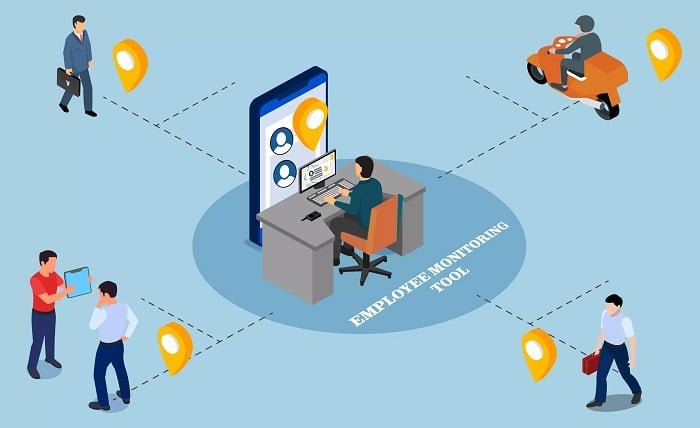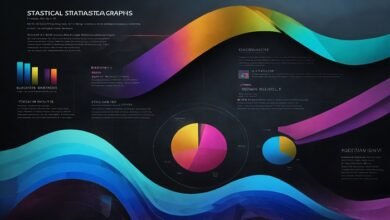The Ultimate Guide to Employee Monitoring Software

Employee Monitoring Software has become an essential tool in the modern workplace, offering businesses a way to manage and track projects effectively while ensuring productivity and compliance. In this article, we’ll delve into the key aspects of Employee Monitoring Software, its benefits, features, and ethical use, along with some frequently asked questions to help you understand this technology better.
What is Employee Monitoring Software?
Employee Monitoring Software is a digital solution that allows businesses to track employee activities and manage their workforce efficiently. This software plays a pivotal role in today’s business landscape, where remote work and digital collaboration are more prevalent than ever. It helps organizations manage and track projects, ensuring that tasks are completed on time and resources are used efficiently.
Key Features of Employee Monitoring Software
Employee Monitoring Software comes packed with features designed to streamline management and enhance productivity:
- Time Tracking: Records the time spent on various tasks and projects, helping managers understand where efforts are concentrated.
- Screen Monitoring: Captures screenshots or records screen activity to provide insight into employee work habits.
- Activity Logging: Logs keystrokes, mouse movements, and application usage to offer a detailed view of employee activity.
- Reporting: Generates comprehensive reports on productivity, time management, and project progress, aiding in data-driven decision-making.
These features not only help in tracking progress but also in identifying potential bottlenecks, thereby improving overall workflow and management.
Benefits of Using Employee Monitoring Software
Implementing Employee Monitoring Software can yield numerous advantages for both employers and employees:
1. Increased Productivity: By providing a clear picture of work habits, the software helps in setting realistic goals and expectations.
2. Reduced Operational Costs: Monitoring tools can identify inefficiencies and areas of resource wastage, leading to cost savings.
3. Improved Remote Work Management: For businesses with remote teams, this software provides a structured approach to manage and track projects, ensuring accountability and performance.
Compliance and Privacy Concerns
While Employee Monitoring Software is powerful, it’s crucial to use it ethically and in compliance with data protection laws. Businesses should:
- Ensure Transparency: Inform employees about the monitoring software and its purposes.
- Limit Data Collection: Only collect data relevant to performance and productivity.
- Secure Data Storage: Protect monitored data with robust security measures to prevent unauthorized access.
By adhering to these practices, companies can use Employee Monitoring Software in a way that respects employee privacy while achieving business goals.
Use Cases Across Industries
Different industries can benefit from Employee Monitoring Software in various ways:
- IT and Software Development: Track project milestones, manage remote teams, and optimize coding time.
- Customer Support: Monitor call handling and ticket resolution to improve service quality.
- Finance: Ensure compliance with regulatory standards and monitor sensitive data handling.
- Creative Agencies: Manage and track projects, monitor creative workflows, and ensure deadlines are met.
These use cases demonstrate the versatility of Employee Monitoring Software in adapting to different business needs.
Choosing the Right Employee Monitoring Software
Selecting the right software involves considering several factors:
- Scalability: Choose software that can grow with your business.
- Integrations: Ensure compatibility with your existing project management and communication tools.
- User-Friendliness: Opt for a solution that is easy to implement and use for both managers and employees.
These considerations will help you pick a solution that aligns with your organizational requirements.
Best Practices for Implementation
To successfully implement Employee Monitoring Software, follow these steps:
- Communicate Clearly: Inform your team about the software and its objectives.
- Set Clear Policies: Establish guidelines on what will be monitored and how the data will be used.
- Provide Training: Offer training sessions to help employees understand the software’s benefits and functionality.
By involving your team in the process, you can reduce resistance and ensure a smoother transition.
Trends and Future Outlook
The Employee Monitoring Software market is evolving rapidly, with trends like AI-driven analytics, enhanced data visualization, and integration with HR management systems. As remote and hybrid work models continue to grow, this software will likely incorporate more advanced features to cater to changing business needs.
FAQs
1. What is Employee Monitoring Software?
Employee Monitoring Software is a tool used by businesses to track employee activities, monitor productivity, and manage projects. It includes features like time tracking, screen monitoring, and activity logging.
2. Is Employee Monitoring Software legal?
Yes, Employee Monitoring Software is legal as long as it complies with data protection laws and regulations. Companies must inform employees about the monitoring practices and ensure data is collected and stored ethically.
3. How does Employee Monitoring Software improve productivity?
By providing insights into work patterns and identifying inefficiencies, the software helps managers set realistic goals and optimize resource allocation, leading to improved productivity.
4. Can Employee Monitoring Software be used for remote teams?
Absolutely. Employee Monitoring Software is particularly beneficial for managing remote teams, allowing businesses to monitor performance, track project progress, and ensure accountability.
5. What should I consider when choosing Employee Monitoring Software?
Look for features like scalability, ease of integration with other tools, and user-friendliness. Ensure the software you choose aligns with your business needs and complies with legal requirements.
In conclusion, Employee Monitoring Software is a valuable asset for businesses looking to boost productivity, ensure compliance, and effectively manage and track projects. By choosing the right software and implementing it thoughtfully, companies can create a more efficient and transparent work environment.




